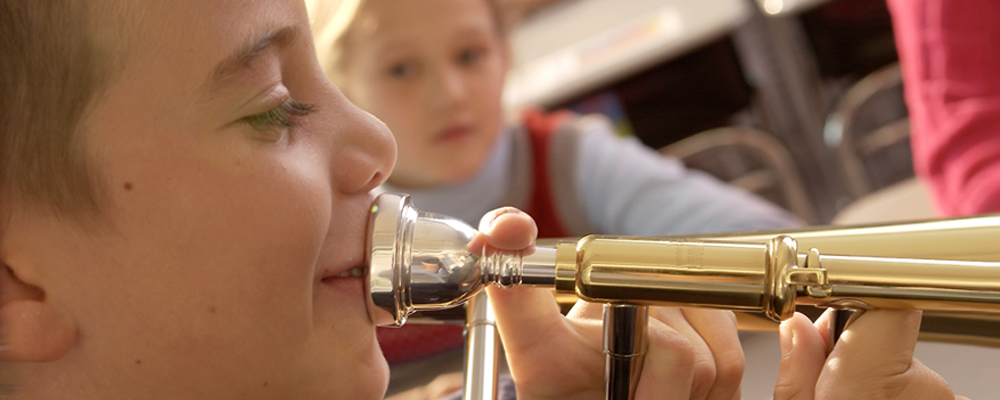How to Play the Trombone
How to play the trombone
Blowing
Take a deep breath, lightly close your lips, and then blow.
* Be careful not to puff out your cheeks or change the shape of your lips.
Example of how to blow
Blowing into a mouthpiece
Press the mouthpiece to the middle of your lips, take a deep breath, and blow it out. It's enough if your lips vibrate and you hear a blowing sound.
Example of how to blow into a mouthpiece
Assembling the trombone
After confirming that the slide lock is locked, join the bell tube and slide, and then insert the mouthpiece as you gently twist it.
Detaching the bell tube and slide
Holding the trombone
Support the trombone firmly with your left hand, relax your shoulders, and hold the trombone with a relaxed right hand.
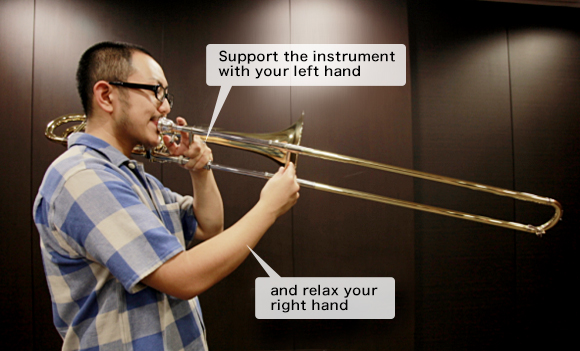
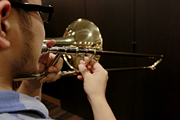
From the point of view of the player
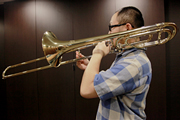
From the side
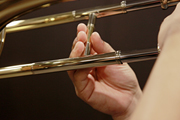
Right hand grip
Blowing (Toh, Tay, Tee)
When playing a trombone you can change the sound it produces just by how your lips vibrate when blowing-no fingers required. To produce low notes, vibrate your lips slowly; the higher the note you want to play, the quicker you will need to vibrate your lips. When you are blowing be sure not to press the mouthpiece firmly to your lips.
| Blowing | Pitch | Lip vibration | Watch the video |
|---|---|---|---|
| Toh | Low |  |
|
| Tay | Middle |  |
|
| Tee | High |  |
Using positioning and tonguing to produce sound
Once you are able to blow properly (toe, too, tee), try using positioning and tonguing to produce sound.
Also, once you can play the scale, try playing to sheet music.
Example of practicing positioning and tonguing
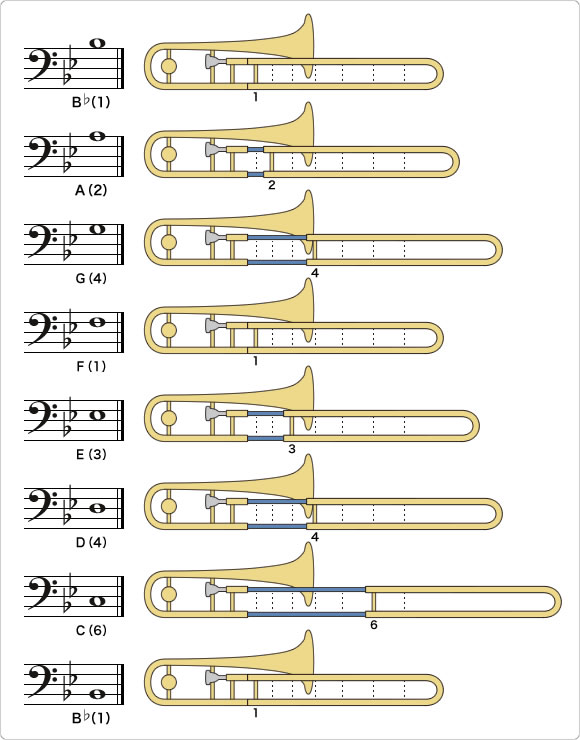
Example of practicing positioning and tonguing

"When the Saints Go Marching In"
Example of how to blow into a mouthpiece
Using vibrato
There are two main ways to create vibrato when playing a brass instrument: with breath control (as with a flute) or lip area control. Trombones add a third method: using the slide. Knowing when to make use of these three methods can really increase your range of expression.
Maintaining the trombone
There is a pipe called the "mouthpipe" located inside the pipe on the side the mouthpiece is attached. When cleaning the inside of the instrument it is important to be aware of this. There are some players who just clean it with a swab.
It is very important to hold the end of the cleaning rod that is wrapped in gauze with your hand.
* A mouthpiece brush can be useful when cleaning the mouthpiece.
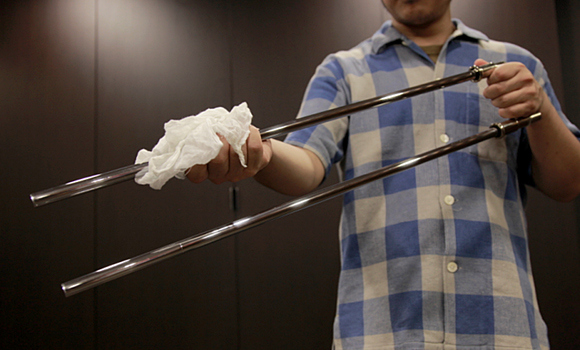
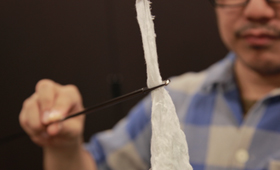
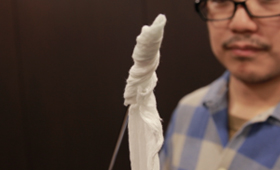
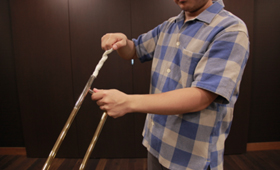
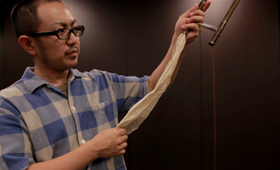
Musical Instrument Guide:Trombone Contents
Structure
How to Play
How the Instrument is Made
Choosing an Instrument
Care and Maintenance
Trivia
- God is in the trombone
- The trombone was a bit of a problem for cavalries...
- A trombone that would scare even a snake!
- Two instruments, both tenor, but quite different!
- A trombone player walks into pawnshop...
- You can trill just by moving your mouth
- It is possible to increase the pitch even as you extend the slide
- Famous pieces from trombone concertos
- Orchestra pieces in which the trombone plays an important role
- The Yamaha quartet
- For trombones, why does sheet music notation differ from the fundamental tone of the instrument?
- A bass trombone-with an F attachment only

